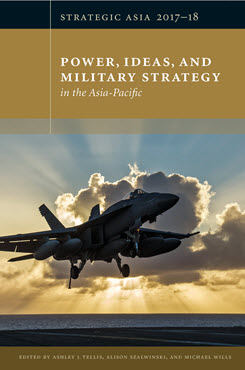Japan's Grand Strategic Shift
From the Yoshida Doctrine to an Abe Doctrine?
This chapter argues that Japan’s grand strategy—responding to evolving security pressures and material constraints—is exploring a shift from the old certainties of the Yoshida doctrine to an Abe doctrine characterized by a new level of military commitment and stronger integration of the U.S.-Japan alliance.
Executive Summary
MAIN ARGUMENT
For most of the postwar period, Japan has opted for the Yoshida doctrine’s minimalist defense posture and dependence on the U.S. as the best fit for navigating an uncertain regional security environment. Other debated options of neutralism, autonomy, and multilateralism have largely been rejected as lacking feasibility. Consequently, in the post–Cold War era, the Yoshida doctrine has been adapted to meet unfolding strategic needs while still delimiting defense commitments. However, the rise of China and uncertainties over U.S. power and commitment have forced Japanese policymakers to reconsider their grand strategy. The emerging Abe doctrine now commits Japan to move beyond minimalism in its national defense posture and to cease much of the hedging around the U.S.-Japan alliance. But the transition to the Abe doctrine is not yet complete given residual domestic antimilitarism and potential strains to the U.S.-Japan alliance.
POLICY IMPLICATIONS
- Japan is intent on shifting its grand strategy and fulfilling a greater commitment to the U.S.-Japan alliance. This presents opportunities for the U.S., with Japanese support, to strengthen its own strategic position in the region vis-à-vis rising challenges.
- The Trump administration may find Japan a responsive partner in its quest for greater burden-sharing among East Asian allies and should continue close U.S. engagement on strategic priorities.
- To avoid tilting the Abe doctrine toward traditions of autonomy, the U.S. needs to manage the alliance carefully, especially given Japan’s recent concerns about abandonment and resurgent concerns about entrapment.
Strategic Asia
The Strategic Asia annual edited volume incorporates assessments of economic, political, and military trends and focuses on the strategies that drive policy in the region. Learn more about Strategic Asia.


